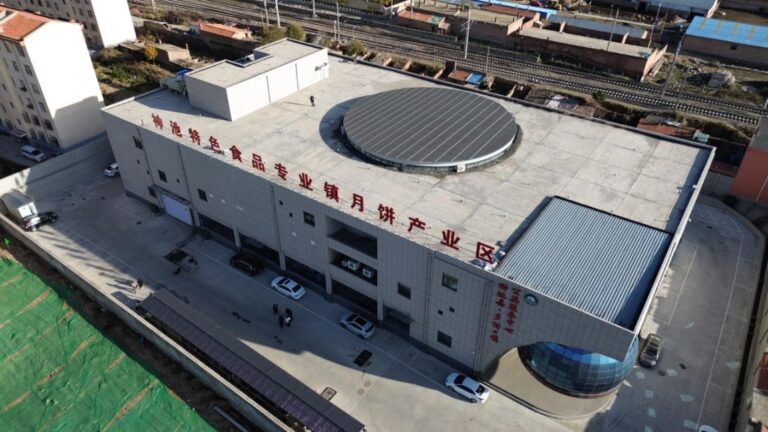The Chinese Perovskiet Solar cell and Modulemaker said that the customized with double glass of perovskiet modules with double glass measuring measures of 1,200 mm x 1,000 mm and achieving a light transit of around 40%reach.
The Chinese perovskiet cell maker Micrquanta Semiconductor has supplied his solar modules for what it claims to be the world’s largest building-integrated photovoltaic (BIPV) project based on perovskite solar panels.
The company said it has tailor -made the system for the structural and environmental conditions of the building, guaranteeing the reliable operation, even in the hard winter climate of the mountainous regions of North China.
The system on the roof is on top of the main building of a university start-up hub in the county of Senchi, in the Chinese province of Shanxi.
It has a capacity of 17.92 kW and uses tailor -made perovskiet modules of 1,200 mm x 1,000 mm. These double glazed modules reach a slight transfer of approximately 40%, making sufficient daylight in the interior of the building possible while they generate electricity.
Taking care of sustainability and waterproofing was an important challenge for developers. The modules were installed using a standard glass skylight framework, with aluminum alloy clamps along drainage slopes and reinforced with high -quality, weather -resistant sealing agents. This reportedly ensures long -term performance in different weather conditions. The system was used for an amount of CNY 700,000 ($ 97,000).
Microquanta is one of the Chinese leaders in Perovskite PV production. In January 2025, the 810 cm² Perovskiet module achieved efficiency certification of 21.86% of the National PV industry and test center of China. The company is currently building a Gigawatt scale Perovskite production line in Quzhou, the province of Zhejiang, aimed at mass production in the first half of 2025.
The Route Card from Micrquanta includes producing 2.88 m² Perovskiet modules with a large area with an efficiency of 20% and a lifespan of 25-year-old-critical milestones for scaling up Perovson-Sonne-Adoption in BIPV applications.
According to the China Photovoltaic Industry Association (CPIA), the BIPV installations of China reached around 700 MW in 2024, with rapid growth on an annual basis. While the government rolls out support policy and removes administrative barriers, the sector is expected to grow rapidly after 2015. Market research agencies predict that the BIPV sector of China could achieve a rating of CNY 300 billion ($ 41.5 billion) by 2030.
This content is protected by copyright and may not be reused. If you want to work with us and reuse part of our content, please contact: editors@pv-magazine.com.
Popular content



